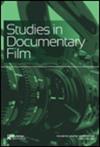Establishment and potential spread of the introduced spotted-thighed frog, Litoria cyclorhyncha (Ranoidea cyclorhynchus), in South Australia
IF 0.8
4区 综合性期刊
Q3 MULTIDISCIPLINARY SCIENCES
Transactions of the Royal Society of South Australia
Pub Date : 2018-01-02
DOI:10.1080/03721426.2018.1444911
引用次数: 3
Abstract
ABSTRACT Litoria cyclorhyncha is a hylid frog native to southwest Western Australia (WA). It was first recorded in South Australia (SA) in 2000 and has established a breeding population in Streaky Bay on the western Eyre Peninsula since at least 2011. L. cyclorhyncha is a relatively large predatory frog that presents a potential threat to fauna and ecosystem processes in SA and eastern Australia. This study examines the invasion history and current and potential future distributions of this frog using historical records, field surveys and species distribution modelling (SDM). The historical records in SA suggest human-assisted dispersal through transport networks. Field surveys throughout the Eyre Peninsula during 2016–2017 detected three native species of frogs but no additional breeding populations of L. cyclorhyncha outside of Streaky Bay. Within Streaky Bay, frog abundance appears to be concentrated around permanent water bodies, but the species is also well established in urban habitats. SDM suggests that suitable environmental conditions exist for L. cyclorhyncha in southern and eastern Australia. This, and the frog’s ability to disperse over long distances, suggests considerable potential for the species to become invasive. As L. cyclorhyncha has potential to significantly impact biodiversity and ecosystems, management strategies are urgently needed.南澳引进斑点腿蛙的建立和潜在传播
Litoria cyclorhyncha是一种原产于西澳大利亚西南部的杂交蛙。它于2000年在南澳大利亚(SA)首次被记录,至少从2011年起就在艾尔半岛西部的条纹湾建立了一个繁殖种群。L. cyorhyncha是一种相对较大的掠食性蛙类,对南澳和澳大利亚东部的动物和生态系统过程构成潜在威胁。本研究利用历史记录、野外调查和物种分布模型(SDM)分析了该蛙的入侵历史以及当前和未来的潜在分布。南非的历史记录表明,人类通过交通网络辅助传播。2016-2017年在艾尔半岛的实地调查中发现了3种本地蛙类,但在条纹湾以外没有发现L. cyclorhyncha的繁殖种群。在条纹湾,青蛙的丰度似乎集中在永久水体周围,但该物种也在城市栖息地建立了良好的基础。SDM表明,澳大利亚南部和东部存在适宜的环境条件。这一点,再加上蛙类远距离分散的能力,表明该物种极有可能成为入侵物种。由于环孢草对生物多样性和生态系统具有潜在的重大影响,因此迫切需要采取相应的管理策略。
本文章由计算机程序翻译,如有差异,请以英文原文为准。
求助全文
约1分钟内获得全文
求助全文
来源期刊
CiteScore
1.40
自引率
12.50%
发文量
17
审稿时长
>12 weeks
期刊介绍:
Published since 1880, the Transactions of the Royal Society of South Australia is a multidisciplinary journal that aims to publish high quality, peer-reviewed papers of particular relevance to Australasia.
There is a particular focus on natural history topics such as: botany, zoology, geology, geomorphology, palaeontology, meteorology, geophysics, biophysics, soil science and environmental science, and environmental health. However, the journal is not restricted to these fields, with papers concerning epidemiology, ethnology, anthropology, linguistics, and the history of science and exploration also welcomed.
Submissions are welcome from all authors, and membership of the Royal Society of South Australia is not required.
The following types of manuscripts are welcome: Reviews, Original Research Papers, History of Science and Exploration, Brief Communications, Obituaries.

 求助内容:
求助内容: 应助结果提醒方式:
应助结果提醒方式:


